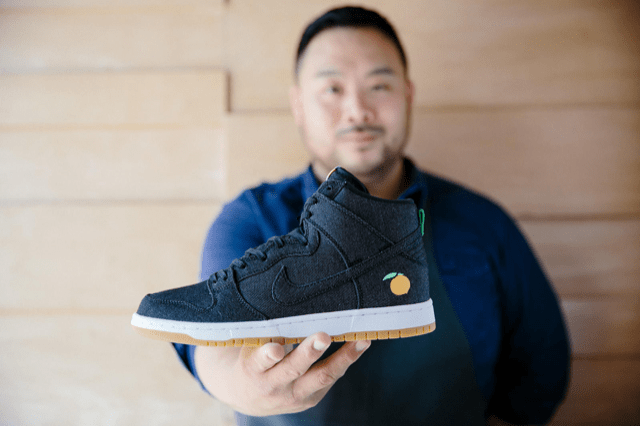GUEST EDITORIAL: HOW TO MAKE A VIRTUAL FORTUNE


Tomorrow, Stephen is going to a friend’s wedding. He shares with me his dilemma: he needs a new tie. “You don’t have a single tie to wear?” I inquire. Stephen shakes his head, “I have a tie. I wore it to a wedding last week.”
Now I get it. I share my thinking: men are becoming more like women in their fashion awareness and sensitivity; they want to look unique amongst their peers. Stephen doesn’t want to be seen in the same tie two events in a row.
“That’s not it,” he corrects me. “I don’t care what I look like at the wedding. I don’t want to be seen on Instagram in the same tie.”
Aha moment. “If it doesn’t happen on social media… It didn’t happen.” We live online.
What if Stephen could alter his images and selfies from the pending wedding to appear as if he were wearing a new tie? I asked if this would solve the problem. He thought for a moment and said, “Sure, why not? Saves me a trip to a store and some money. What’s the name of the app?”
Augmented Reality (AR) technology, along with Virtual Reality (VR), now provide us with tools and experiences previously unimaginable outside the realm of science fiction. “We believe that one day everyone will use virtual reality to improve how we work, how we play, and how we connect with each other.” – Mark Zuckerberg, Facebook CEO

AR “Smart” mirrors have become virtual dressing rooms in stores from Uniqlo to Neiman Marcus. Uniqlo uses full-length AR mirrors, allowing customers to view themselves wearing items in colors and patterns not available in the store, reporting over 12,000 monthly users per location along with increased sales.

In June, Nike introduced its SNKRS app in partnership with the NYC restaurant Momofuku. Scanning a menu with the app launched an AR experience revealing a virtual 3D model of a new, limited edition Nike shoe, available for purchase only to users.

Second Life is a MMORPGs (Massively Multiplayer Online Role-Playing Game), launched in 2003 and still engaging over 1 million monthly users. Second Life “citizens” create a digital avatar of themselves and interact with other users in a virtual environment fashioned by the game’s creators and by the users themselves.

To build communities, buildings, and businesses (nightclubs, retail stores, etc.) users need land, tools, and other objects which are purchased with a virtual currency called “Linden Dollars.” Users may also purchase virtual clothing, appliances, artwork, pets, swimming pools and meals at Second Life restaurants run by other users, with “L$,” which in turn may be purchased with real currency.
It’s erroneous to dismiss virtual goods as an insignificant “in-app” purchase. Second Life users have spent more than $3.5 billion U.S. Dollars for virtual items that can only be used within the game. There is even a LindeX Exchange, trading Linden Dollars for a variety of “real” currencies. Between June 2008 and June 2017, the exchange rate for Linden Dollars has remained remarkably stable with a range between L$270 to L$240 per US$1.
“Second Life peaked a decade ago,” and, according to tech guru and AR evangelist, Eduardo Siman, “has become a desert of virtual loneliness. At its azimuth – there were hundreds of companies, universities, and brands that had a presence on Second Life. They expected the virtual “Linden” economy to explode – but it didn’t.”
Facebook spent $2 billion to acquire Oculus, a Virtual Reality hardware, and software start-up, only to pivot recently into AR applications. Microsoft has over $1 billion invested in AR tools including HoloLens. Amazon has Echo Look. MagicLeap has raised $1.8 billion, $500 million this week alone, on the promise of AR devices to come. And Apple has deeply embedded AR into their new operating systems and devices.
Eddie Siman continues, “I think that it is much more likely that Facebook, Google, Amazon, or Microsoft will be the creators of ubiquitous VR/AR worlds. In fact, you can see Facebook’s first attempt with Facebook Spaces – which is very well done and allows you to interact with Facebook friends, both VR and not in VR, via facebook messenger.”
The author “wearing” AR augmented glasses and an AR bowtie
Let’s get back to Stephen, his challenge, and his possible solution. Today, Stephen can use Facebook, Snapchat or other tools to readily superimpose a variety of virtual AR neckties, hats and sunglasses onto “real” images and videos of himself. He can then post this media whenever and wherever he wishes. Currently, the AR items are a bit cartoonish. However, several companies, including MojiLaLa and Randa Accessories, are creating photorealistic accessories for precisely this application.
Stephen can also use AR tools to make it appear as if he lost a few pounds, to whiten his teeth, and to remove a few blemishes.
If Stephen can improve his virtual appearance, alter his wardrobe, visit remote locations and participate in events without leaving his sofa, or changing his worn t-shirt, all while guzzling a beer and nibbling on chicken wings… will he choose to do so? Will he choose to do so instead of physically doing so?
The author, wearing an AR Beanie
In the Matrix films, several characters opted to stay in the entire digital world created by machines, rather than live in the “real world.” In the films, the virtual world was a lot nicer. Will Stephen’s “virtual” appearance be more valuable to him than his “real life” appearance? It’s a red pill / blue pill question.
It took 20 years for e-commerce to reach an inflection point. It won’t take that long for VR and AR.
The cost of Oculus VR hardware has recently dropped from $600 to $200, Samsung has a version for $129, and a basic Google Cardboard version is $6.
Significantly, hand-held mobile devices deliver network effects, quickly and efficiently. Today, more than 50 million smartphones are VR and AR-capable. Last month, Apple released iOS11 with ARKIT, a tool available to developers making it possible to easily create powerful AR-based apps for iPhone and iPad. And, the Apple App Store already features over 5,000 VR and AR apps.
The AR/VR inflection point is rapidly approaching.
“We know that the most important technologies don’t start out mainstream. In fact, a lot of them seem too crazy or complex to start. And the conventional thinkers will always say that there will be something more familiar, that delivers enough of the value.” – Mark Zuckerberg, on AR and VR
In our disrupted landscape, fraught with challenge and opportunity, do VR and AR present a real opportunity for retailers and brands to earn a virtual fortune?
Most likely, the answer is “yes.” The questions are how, who and when.
Will we create a functional version of “Rekall,” the Virtual Travel Agency from the film “Total Recall,” where memories of vacations are implanted, or experienced in virtual reality?
“Better, cheaper and safer than real life. Call Rekall, for the memories of lifetime…”
Today, with or without VR goggles, Google Voyager will take you to Oktoberfest in Munich, provide a virtual tour of Tokyo, or an off-world visit to the International Space Station.
On November 3rd, Discovery will launch TRVLR, “A New Virtual Reality Experience.”
“A white-knuckle ride into the curious lives of locals from seven continents of the world. Get ready to explore 32 mind-blowing locations and events as if you were there yourself. Enjoy the trip. “
Will we follow the path of Second Life, and the powerful, immersive, and rapidly emerging virtual worlds, where increasingly large numbers of consumers will pay real dollars for virtual products and fashion they can only use or wear in non-physical digital spaces?
At a minimum, augmented reality is becoming the dressing room of tomorrow, a “try and buy” funnel for real-world purchases. On a deeper level, what will VR and AR mean for commerce, culture, interpersonal engagement, and society at large?
A virtual Pandora’s box has been opened. It’s easy to identify the pitfalls and risks that have been released. Remember, hope was in there, too.
Stay tuned.
__
David J. Katz is chief marketing officer at Randa Accessories. His specialty is collaborating with suppliers, brands, and retailers to innovate successful outcomes in evolving markets.

